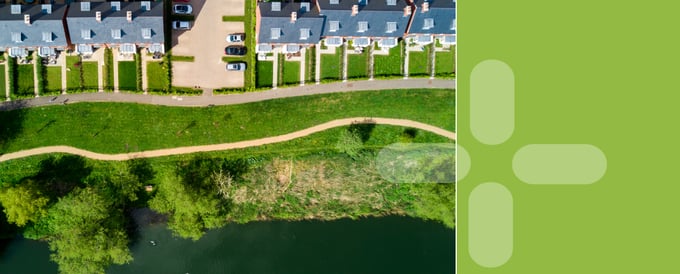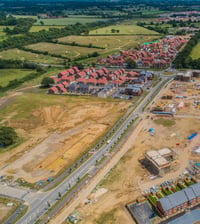From February 12th 2024, housing developers in England must submit a biodiversity gain plan for each new planning application to be legally compliant.
This will be assessed by local authorities to ensure there is evidence of a carefully considered management plan in place, that will create a minimum level of 10% biodiversity net gain for at least 30 years.
Here’s a step-by-step guide on how UK housing developers can create a robust 30-year biodiversity management plan.

- Initial biodiversity assessment
To build an accurate biodiversity gain plan, developers need to start with a thorough biodiversity assessment of the development site.
This involves quantifying existing species, habitats, and ecological features using Natural England’s statutory Biodiversity Metric 4.0 to calculate how many standardised biodiversity units are present on the site before development takes place.
The metric’s calculation takes into account the size, quality, location and type of existing biodiversity units.
Capturing high-quality and precise biodiversity data is the cornerstone of the initial site assessment process. It sets the baseline against which the 10% net gain will be measured and ensures that the plan is rooted in accuracy.
2. Collaborate with experts
This step is crucial. Within BNG guidance for developers, Natural England recommends partnering with experienced ecologists who can interpret biodiversity data with precision to build a bespoke biodiversity management plan.
Ecologists can support developers with the Biodiversity Metric 4.0, calculating the number of biodiversity units needed to not only replace any biodiversity units that will be lost through planned development, but also deliver 10% net gain.
planned development, but also deliver 10% net gain.
Experts, such as the scientists in our LAND360 team, are adept at interpreting the metric’s analysis and translating this into meaningful and actionable sustainable development insights.
This expertise will help guide developers in formulating a robust, data-informed biodiversity gain plan.
- Designing the biodiversity management plan
Using the Biodiversity Metric’s calculations, developers can then work with ecologists to design and compare different BNG proposals, either on-site or off-site, that will help ensure a 10% uplift is delivered for 30 years.
Implementing a biodiversity gain plan with LAND360 support
Creating a 30-year biodiversity management plan is undoubtedly complex.
However, with high-quality biodiversity data and expert support, UK housing developers can evidence a verifiable commitment to sustainable development in their biodiversity gain plans, ensuring the timely achievement of planning permissions.
By strategically incorporating BNG, developments are more likely to secure additional environmental benefits, including improved air quality, soil stability, flood management, and climate change adaptation. This strategic approach is crucial for companies aiming to showcase the broader value of their projects, ultimately enhancing their reputation, competitive advantage, and expertise when bidding for work.
Our LAND360 service helps ensure developers comply with the 10% biodiversity net gain regulations and – beyond this - become trailblazers in fostering ecosystems where both nature and communities thrive.
More about LAND360
LAND360 is Fera's cutting-edge natural capital assessment service. Launched in 2022, it empowers farmers, landowners, estate managers, and housing developers to make informed land use decisions. By accurately measuring and mapping existing land habitat features and modelling biodiversity offerings, LAND360 is a vital tool in the quest for sustainable development and biodiversity enhancement.
